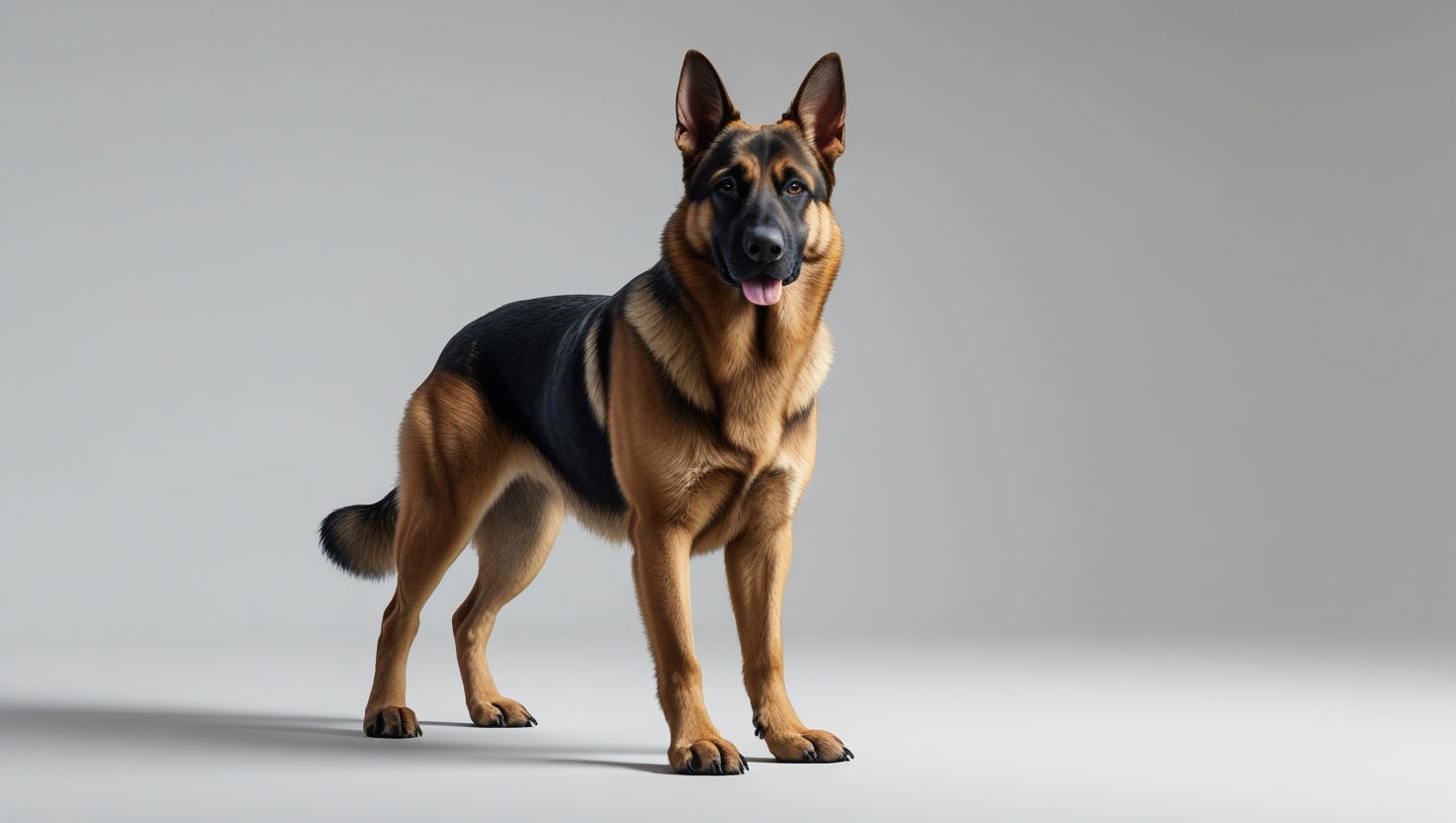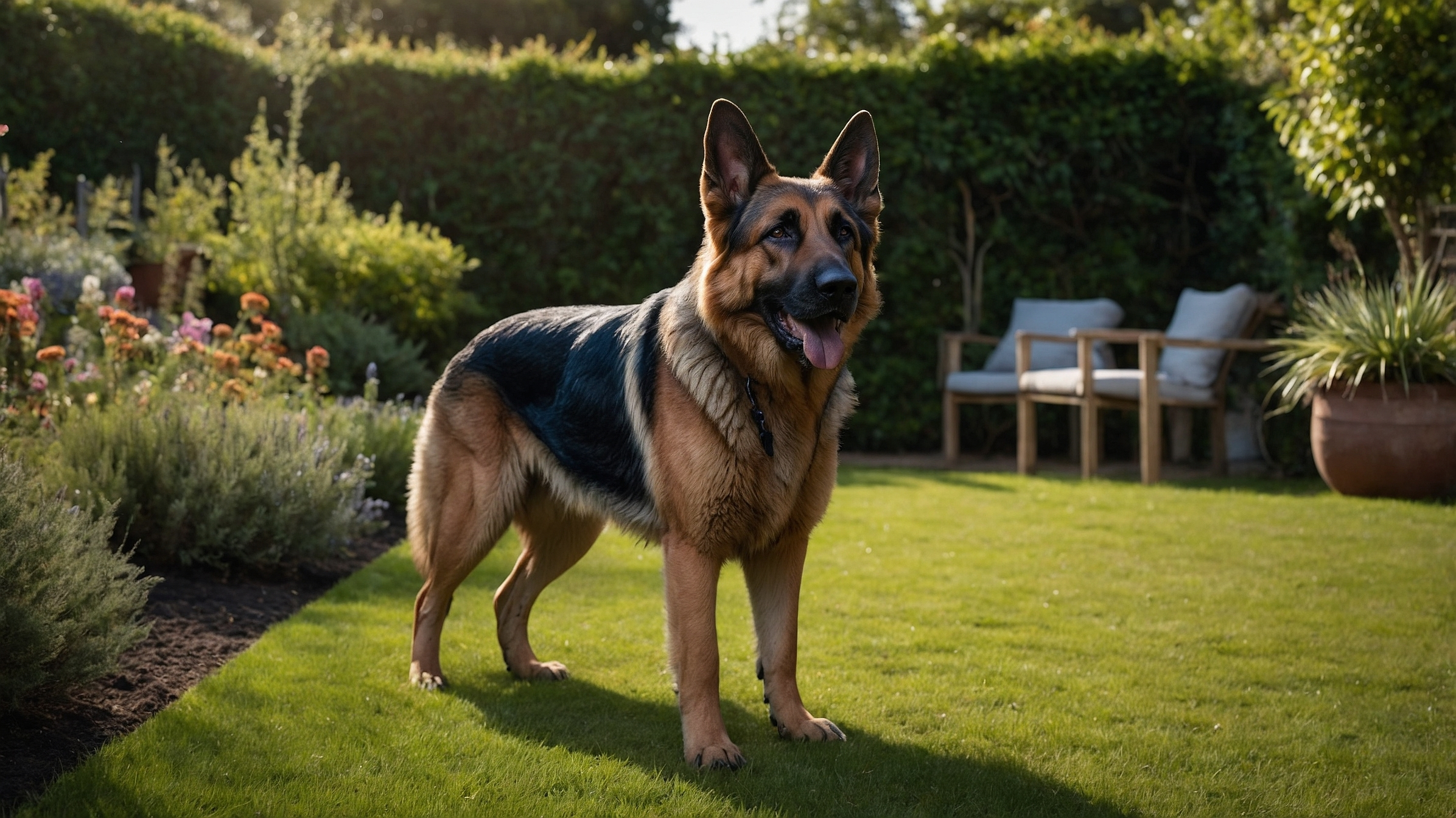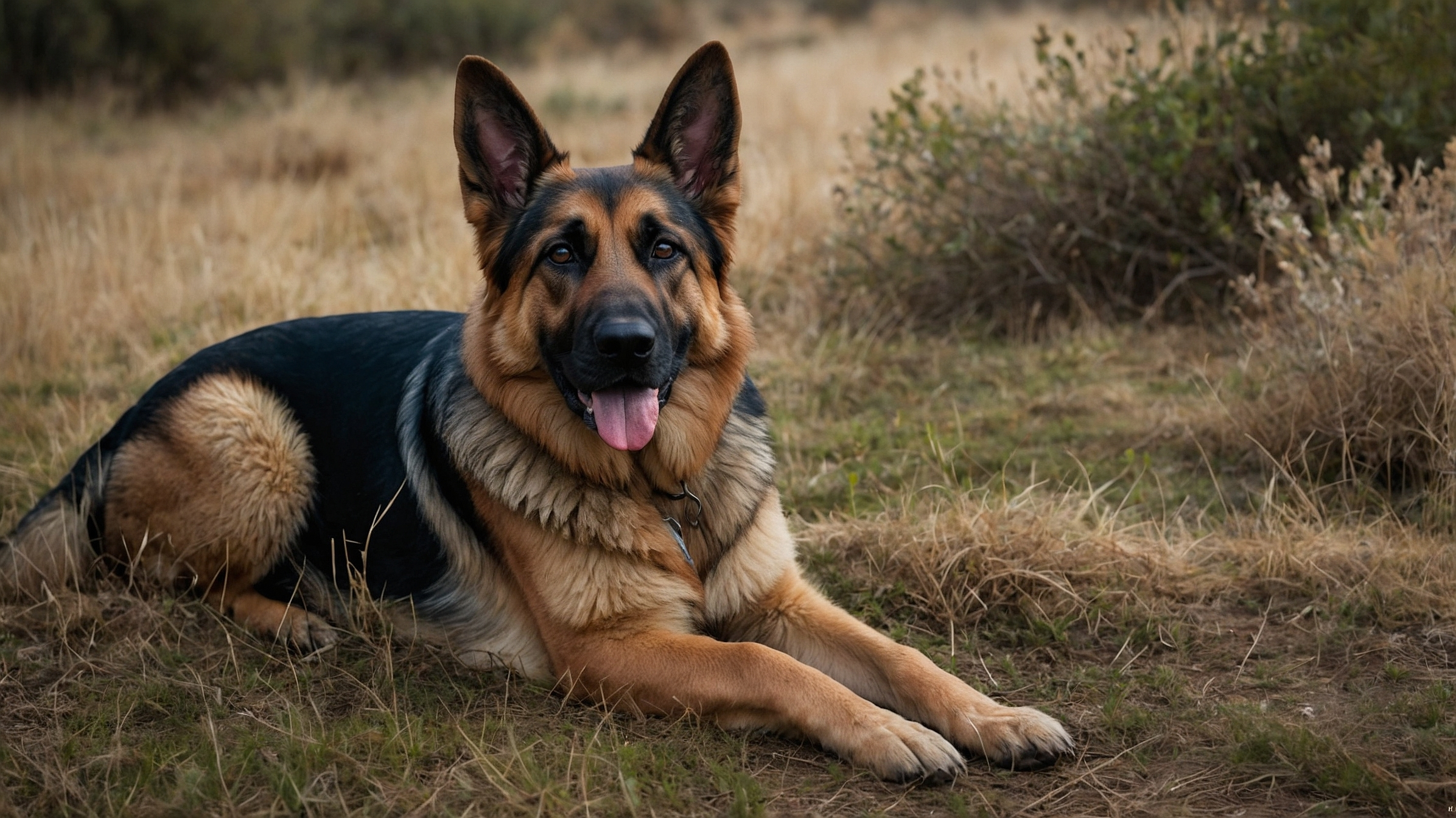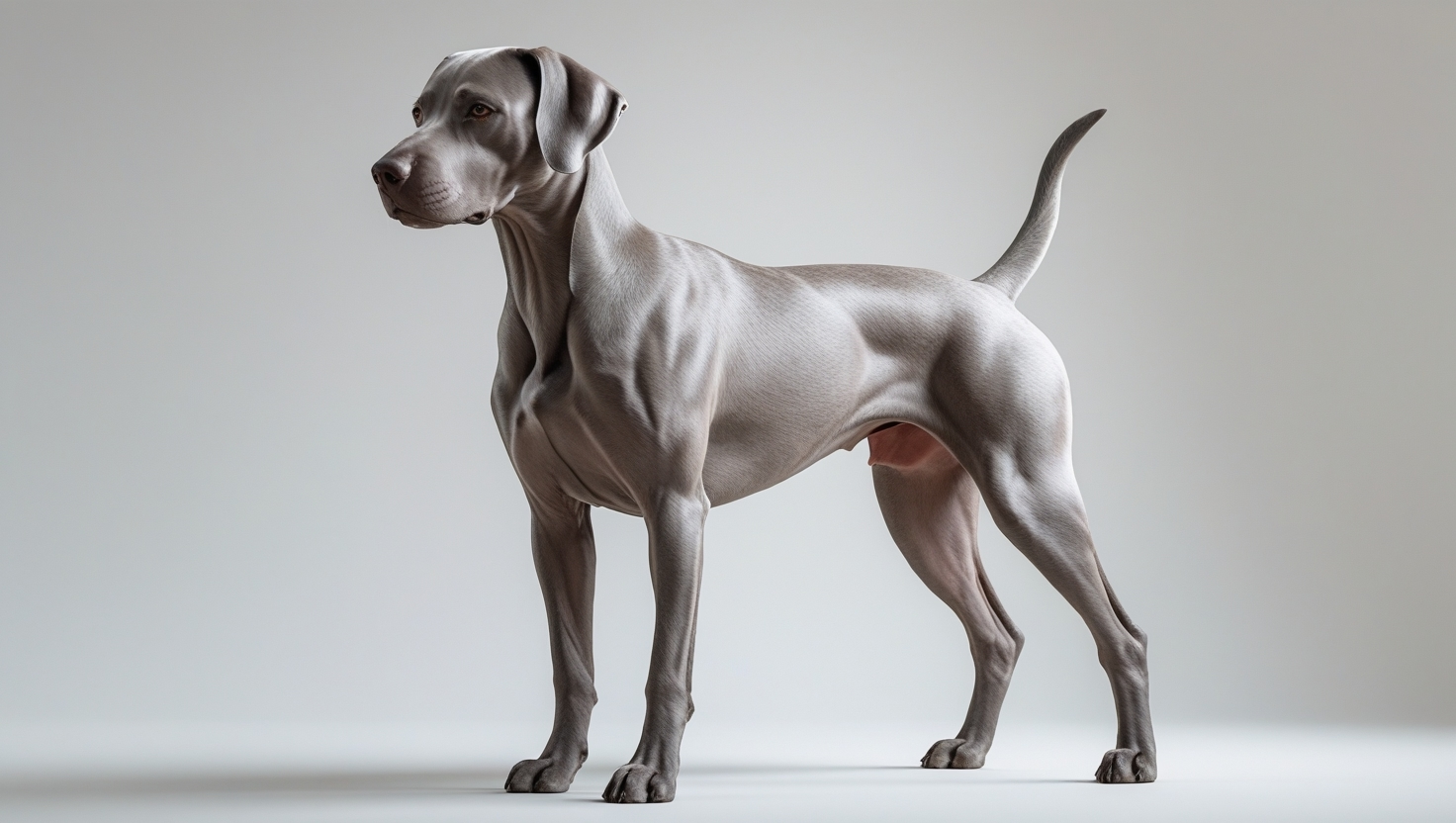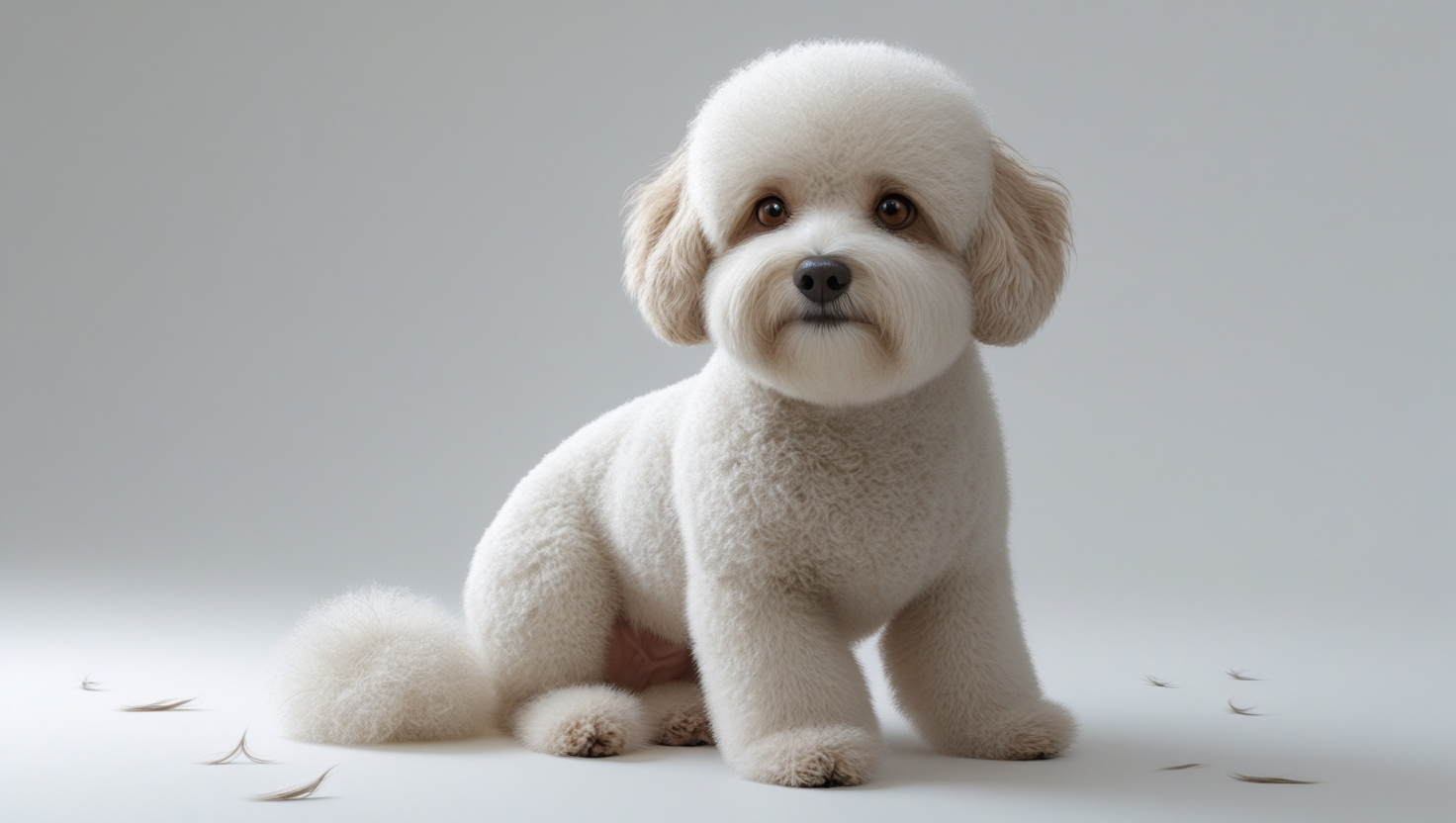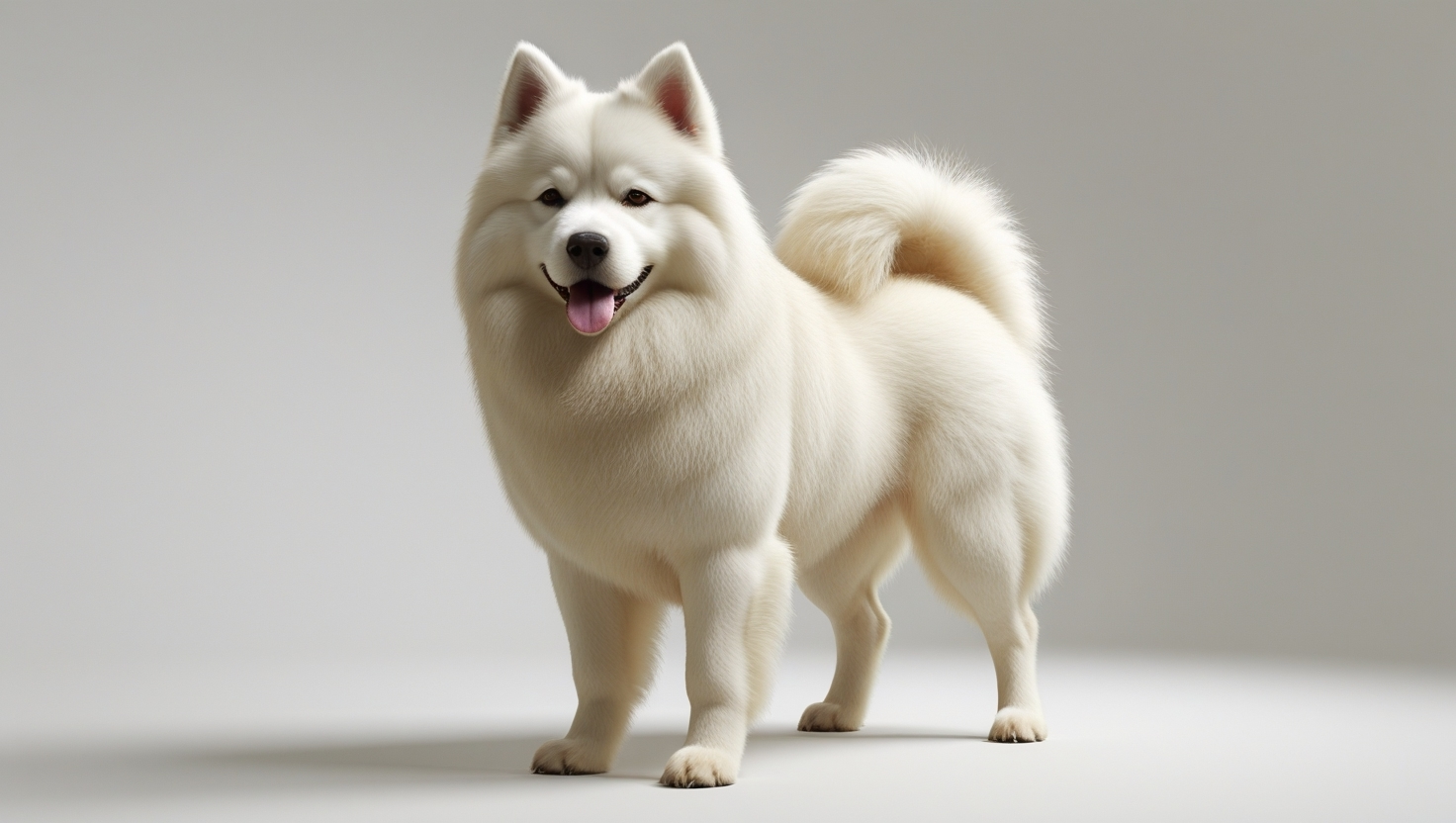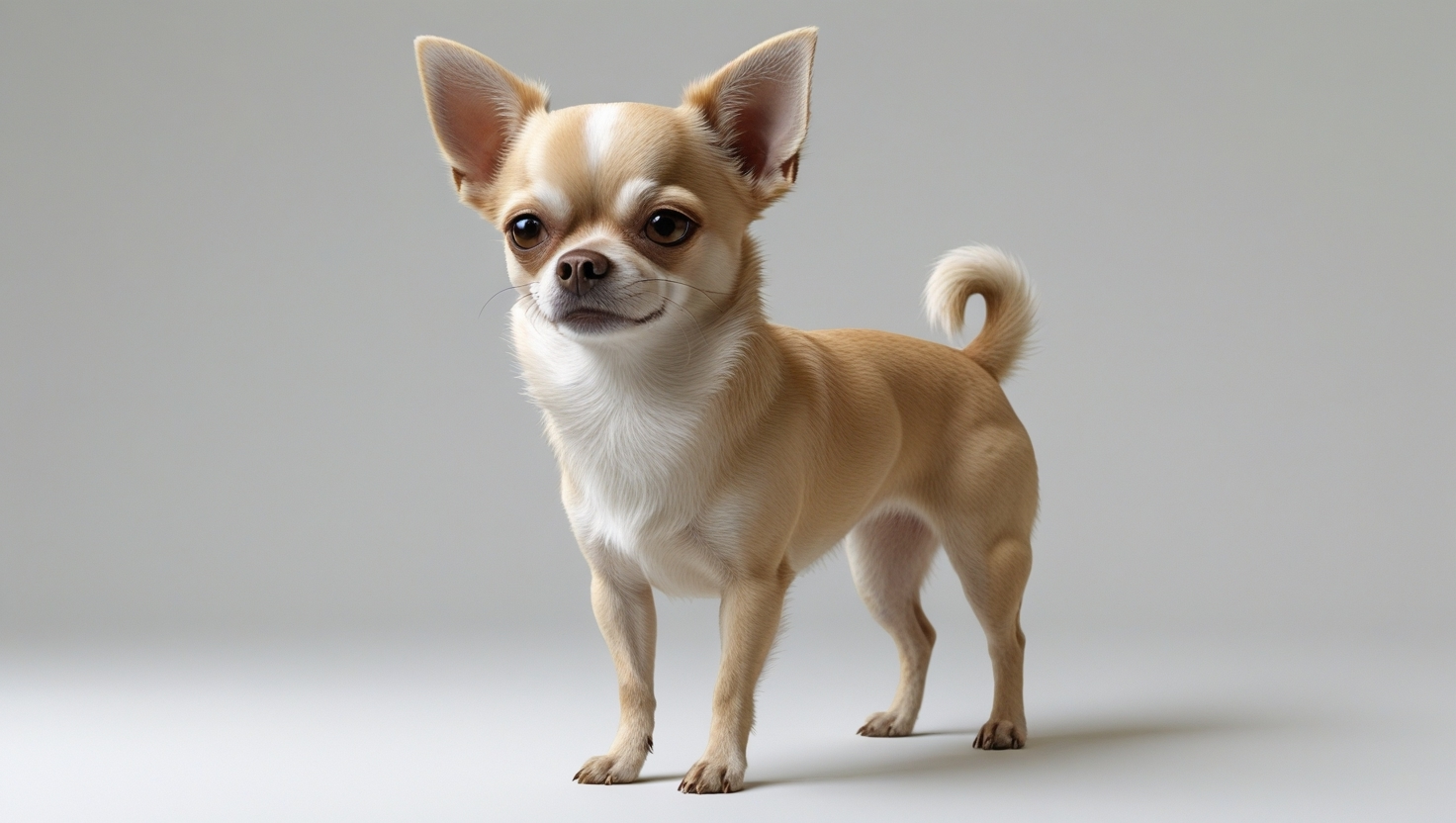Oh, German Shepherd! It’s like the superhero of the dog world. Super smart, versatile, and loyal, known for its strength, courage, and amazing work abilities.
They originally came from Germany in the late 19th century and were first bred to herd and guard sheep. But over time, they’ve become popular in roles like police work, military service, search and rescue, and as service dogs.
These dogs are medium to large-sized with a strong, muscular build, a dense double coat, and that sharp, alert expression we all love.

